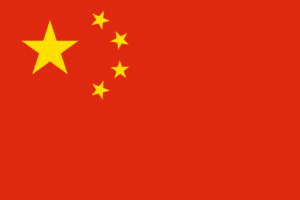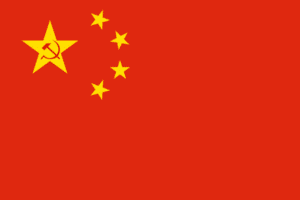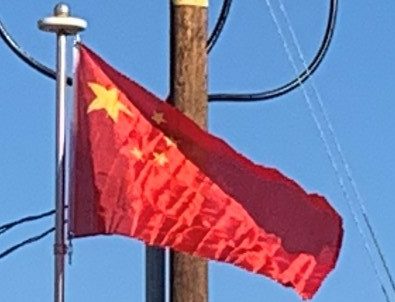
On July 4, 1949, the sixth working group of the Preparatory Committee of the New Political Consultative Conference (新政治協商會議籌備會, PCNPCC) created a notice to submit designs for the national flag. After a few changes, the notice was published in the papers People’s Daily, Beiping Liberation News, Xinmin News, Dazhong Daily, Guangming Daily, Jinbu Daily and Tianjin Daily during the period July 15–26.
Zeng Liansong, a citizen from Wenzhou, Zhejiang, was working in Shanghai at the time the announcement came out; he wanted to create a flag design to express his patriotic enthusiasm for the new country. In the middle of July, he sat down in his attic over several nights to come up with designs. His inspiration for the current design came from the stars shining in the night sky. He thought of a Chinese proverb “longing for the stars, longing for the moon”, (盼星星盼月亮, pàn xīngxīng pàn yuèliàng) which shows yearning. He viewed the CPC as the great saviour (大救星, dà jiùxīng “great saving star”) of the Chinese people, represented by a larger star. The idea for four small stars came from On the People’s Democratic Dictatorship, a speech by Mao Zedong, which defined the Chinese people as consisting of four social classes, also referred to in Asian cultures as the four occupations (士農工商) shi, nong, gong, shang (“the working class, the peasantry, the urban petty bourgeoisie and the national bourgeoisie”). The color yellow implies that China belongs to the Chinese people, a “yellow race”. After working out the details of the placement of the stars and their sizes (he had tried to put all of the stars in the center, but believed it would be too heavy and dull), he sent his “Five Stars on a Field of Red” (紅地五星旗, hóng dì wǔxīng qí) design to the committee in the middle of August.

By August 20, a between 2,992 and 3,012 designs had been sent to the flag committee, including input from committee members themselves such as Guo Moruo and Tan Kah Kee. From August 16 to 20, the designs were viewed at the Beijing Hotel and culled down to a list of 38. These designs are collected into a book named A Reference of National Flag Designs (國旗圖案參考資料). This book was then submitted to the newly established Chinese People’s Political Consultative Conference (CPPCC) for further discussion. However, Zeng’s design was not included until Tian Han nominated it again.
On the morning of September 23, the representatives of the CPPCC discussed the national flags, but came to no conclusion. Some disliked the symbolism which Zeng attached to the four smaller stars, and said it should not include the bourgeoisie. The design Mao and others liked had a giant golden star in the corner on a red flag that was charged with a golden horizontal bar. But this design was strongly opposed by Zhang Zhizhong, who saw the golden bar as symbolizing the tearing apart of the revolution from the country. That night, Peng Guanghan (彭光涵) recommended Zeng’s design to Zhou Enlai. Zhou was satisfied with it and asked for a larger copy of the design to be made. Tan Kah Kee also gave his advice to Mao and Zhou that the power characteristics are more important than Chinese geography characteristics, so there was no need to insist on the golden bar which stands for the Yellow River.
